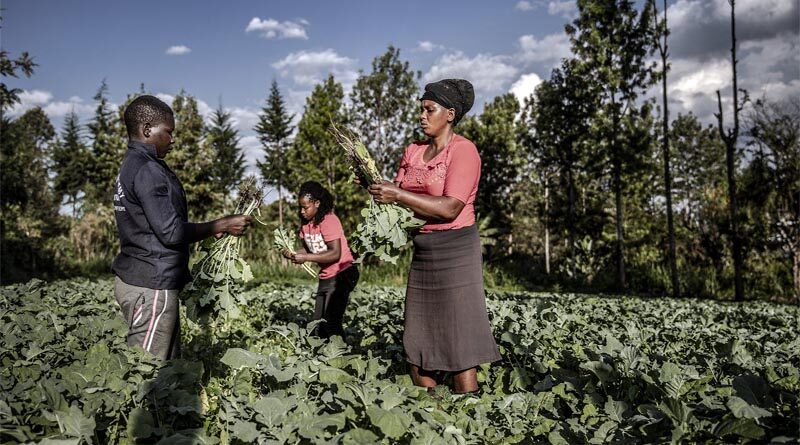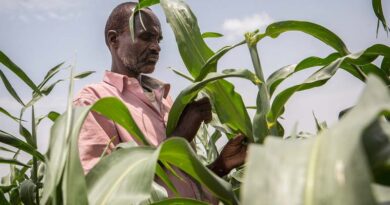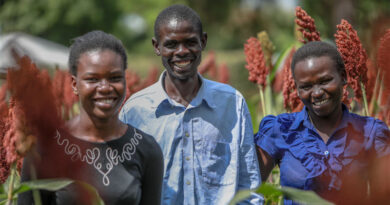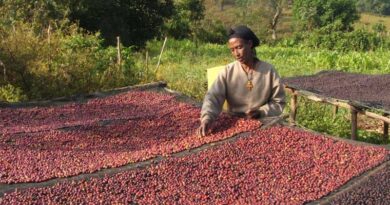New guidelines for scaling up investments for youth in agrifood systems in Africa
15 April 2022, Malabo: The Food and Agriculture Organization of the United Nations (FAO) and the African Union Commission (AUC) have launched new guidelines for scaling up investments for and with youth in agrifood systems in Africa, during the 32nd Session of the FAO Regional Conference for Africa (ARC32).
The Investment Guidelines for Youth in Agrifood Systems in Africa provides practical “how to” steps to develop youth-focused and youth-sensitive investment programmes that see youth as partners in rural development, throughout all phases of the investment programme cycle. The guidelines are for those involved in designing and implementing agrifood investment programmes: governments, financial and technical partners, the private sector, civil society, and young women and men themselves.
“These guidelines are timely, and we need you to take ownership. We need localized ownership,” FAO Director-General QU Dongyu said at the launch in Malabo.
The FAO Director-General also urged countries to become involved in FAO’s One Country, One Priority Product initiative in which agricultural producers identify a product, adopt international standards, build competitiveness and reduce costs, and countries create enabling policies to support young people’s involvement. He gave the example of papaya in countries such as Equatorial Guinea, which are sold cheaply, but could reap great profits if marketed to developed countries that do not have the climate to grow tropical fruits.
Also Read: Good season for kiwiberries despite challenges
“Although political momentum and proclamations to mobilize youth-inclusive investment programmes and interventions are necessary, they are insufficient. We make an urgent call for concrete operational action – the Investment Guidelines for Youth in Agrifood Systems in Africa has great potential to drive this process and bring investments in youth-focused agrifood systems initiatives to scale,” said Josefa Sacko, Commissioner for Agriculture, Rural Development, Blue Economy and Sustainable Environment of the African Union Commission.
A continent of young people
Africa as a region has the highest percentage of youth in the world, estimated at 420 million people between the ages of 15 and 35. This is an enormous resource for future prosperity, but the challenges these young people face are many.
Young people are twice as likely as adults to be unemployed. The majority of working youth are poor and employed in vulnerable, low-quality jobs in the informal sector. In 2019, almost two-thirds (63 percent) of young workers lived in poverty in Africa compared to half (51 percent) of adults. Youth are also overrepresented among the extremely poor. On top of this, young women, especially in rural areas, face gender-biased social norms, laws and practices that limit their involvement in gainful work and seizing development opportunities.
Agrifood systems transformation can address these challenges, opening up vast employment and entrepreneurial opportunities for young women and men in agricultural value chains and across food systems.
Youth are key to building sustainable agrifood systems
Agrifood systems are under pressure from the effects of the climate crisis, chronic and emerging conflicts and the impacts of COVID-19, undermining their ability to provide healthy and affordable food for all. But youth are resilient and innovative. It is crucial to invest differently and engage them as central players driving the transformation of agrifood systems. This includes through expanding automation, digital technologies and the green economy. Young people bring in new ideas, solutions, products and services, new models of entrepreneurship, partnerships and networks. Failing to invest in youth could lead to economic and social costs and threaten agrifood systems’ sustainability.
The Investment Guidelines for Youth in Agrifood Systems in Africa aim to accelerate investments in and by youth in agrifood systems. They recommend four steps to investing in youth : 1) Engage youth in the investment programme cycle; 2) Assess and pre-design with a youth lens; 3) Design with a youth lens; 4) Implement then monitor, evaluate and capitalize on what you learn.
FAO and the AUC developed the Guidelines drawing from research, case study analysis of successful programmes, multistakeholder consultations and a widely-attended technical validation workshop.















